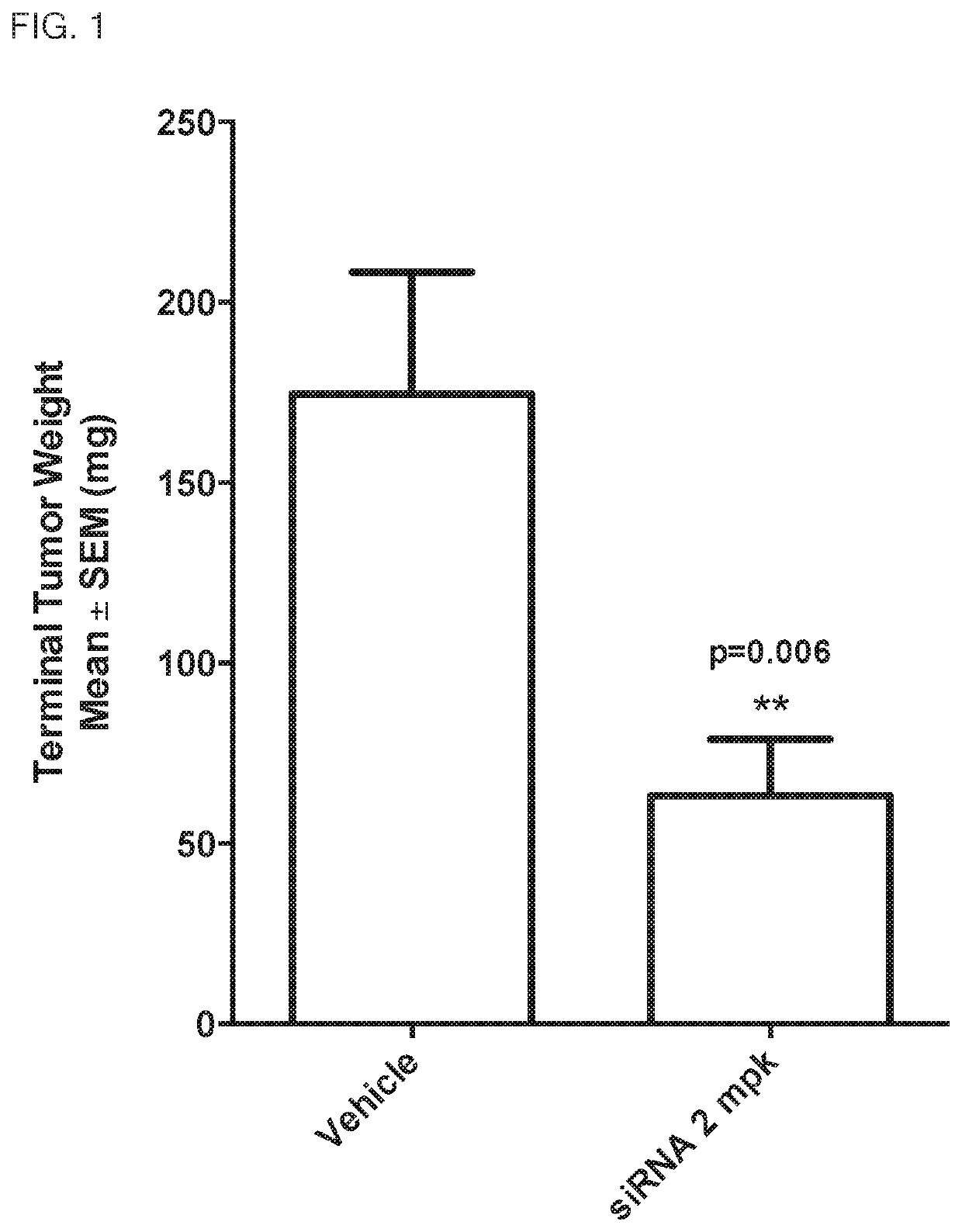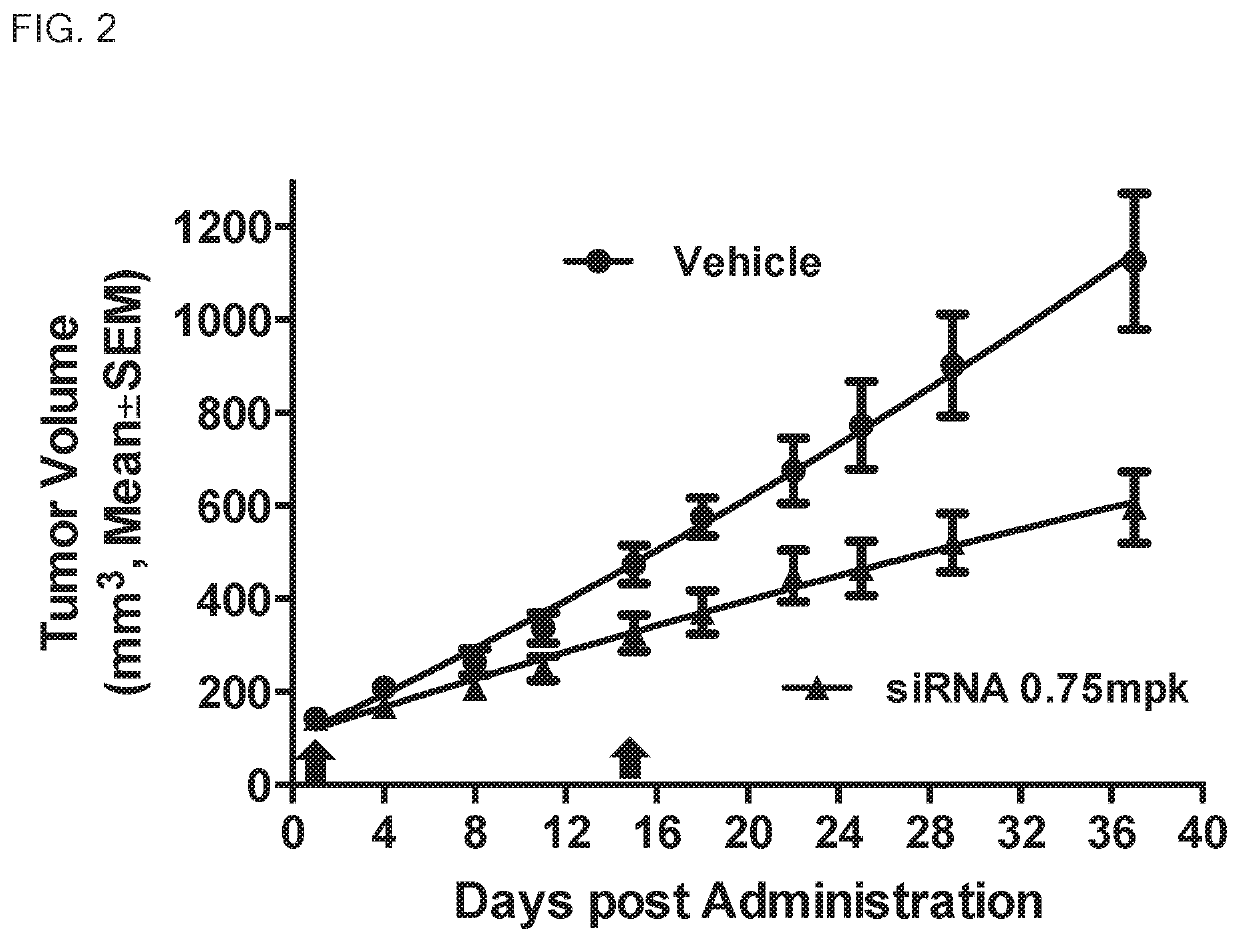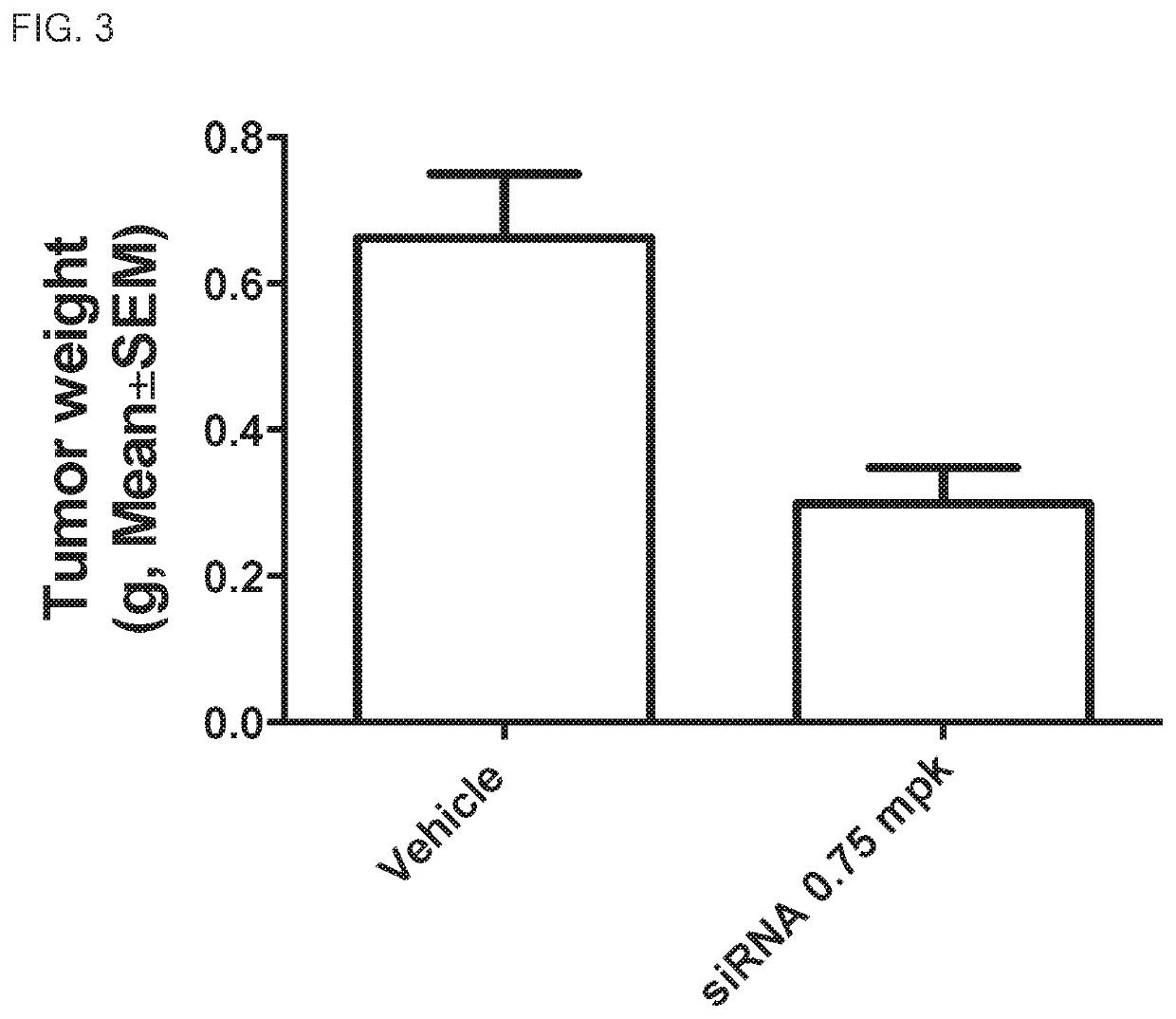Methods and compositions for treating malignant tumors associated with KRAS mutation
a technology of malignant tumors and compositions, applied in the field of methods and compositions for treating malignant tumors associated with kras mutation, can solve the problems of requiring the combined action, suppressing gst-, and not finding a shrinkage or reduction of tumors
- Summary
- Abstract
- Description
- Claims
- Application Information
AI Technical Summary
Benefits of technology
Problems solved by technology
Method used
Image
Examples
example 1
[0214]siRNAs of this invention targeted to GST-π were found to be active for gene silencing in vitro. The dose-dependent activities of GST-π siRNAs for gene knockdown were found to exhibit an IC50 below about 250 picomolar (pM), and as low as 1 pM.
[0215]In vitro transfection was performed in an A549 cell line to determine siRNA knockdown efficacy. Dose dependent knockdown for GST-π mRNA was observed with siRNAs of Table 3, as shown in Table 10.
[0216]
TABLE 10Dose dependent knockdown for GST-π mRNA in an A549 cell linesiRNA structureIC50 (pM)A9 (SEQ ID NOs: 27 and 92)24B2 (SEQ ID NOs: 54 and 119)121B3 (SEQ ID NOs: 55 and 120)235B4 (SEQ ID NOs: 56 and 121)229B13 (SEQ ID NOs: 52 and 117)17BU2 (SEQ ID NOs: 63 and 128)31
[0217]As shown in Table 10, the activities of GST-π siRNAs of Table 3 were in the range 17-235 pM, which is suitable for many uses, including as a drug agent to be used in vivo.
example 2
[0218]The structure of GST-π siRNAs of this invention having deoxynucleotides located in the seed region of the antisense strand of the siRNA provided unexpectedly and advantageously increased gene knockdown activity in vitro.
[0219]In vitro transfection was performed in an A549 cell line to determine knockdown efficacy for GST-π siRNAs based on structure BU2′ (SEQ ID NOs: 133 and 159). Dose dependent knockdown of GST-π mRNA was observed with GST-π siRNAs based on structure BU2′ as shown in Table 11.
[0220]
TABLE 11Dose dependent knockdown of GST-π mRNA in an A549 cellline for GST-π siRNAs based on structure BU2′GST-π siRNA structureIC50 (pM)BU2 with no deoxynucleotides in the duplex region31(SEQ ID NOs: 63 and 128)BU2 with deoxynucleotides in positions 3, 5, and 7 of5the seed region antisense strand (SEQ ID NOs: 141and 167)BU2 with deoxynucleotides in positions 4, 6, and 8 of8the seed region antisense strand (SEQ ID NOs: 143and 169)BU2 with deoxynucleotides in positions 4, 6, and 8 of...
example 3
[0224]The structure of GST-π siRNAs of this invention having deoxynucleotides located in the seed region of the antisense strand of the siRNA provided unexpectedly and advantageously increased gene knockdown activity in vitro.
[0225]In vitro transfection was performed in an A549 cell line to determine knockdown efficacy for GST-π siRNAs based on structure A9′ (SEQ ID NOs: 185 and 197). Dose dependent knockdown of GST-π mRNA was observed with the GST-a siRNAs based on structure A9′, as shown in Table 12.
[0226]
TABLE 12Dose dependent knockdown of GST-π mRNA in an A549 cellline for GST-π siRNAs based on structure structure A9′GST-π siRNA structureIC50 (pM)A9 with no deoxynucleotides in the duplex region24(SEQ ID NOs: 27 and 92)A9 with deoxynucleotides in positions 4, 6, and 8 of1the seed region antisense strand (SEQ ID NOs: 195and 207)A9 with deoxynucleotides in positions 1, 3, 5, and 75of the seed region antisense strand (SEQ ID NOs: 192and 204)A9 with deoxynucleotides in positions 3-8 ...
PUM
| Property | Measurement | Unit |
|---|---|---|
| temperature | aaaaa | aaaaa |
| size | aaaaa | aaaaa |
| volume | aaaaa | aaaaa |
Abstract
Description
Claims
Application Information
 Login to View More
Login to View More - R&D
- Intellectual Property
- Life Sciences
- Materials
- Tech Scout
- Unparalleled Data Quality
- Higher Quality Content
- 60% Fewer Hallucinations
Browse by: Latest US Patents, China's latest patents, Technical Efficacy Thesaurus, Application Domain, Technology Topic, Popular Technical Reports.
© 2025 PatSnap. All rights reserved.Legal|Privacy policy|Modern Slavery Act Transparency Statement|Sitemap|About US| Contact US: help@patsnap.com



